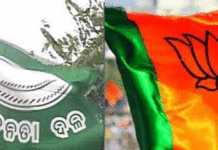
Between May and June, the Chinese military seized about 40 square miles of Indian Territory including Galwan River valley. The high ridges of the Galwan valley overlook the strategic road leading toward Aksai Chin and Karakoram Pass. The seizure of the Galwan River valley allows the Chinese Army to watch the road and, when necessary, bring down artillery fire to preclude its use.
Days after they appeared to have settled the six-weeks-long eyeball-to-eyeball confrontation between their troops along the undefined Line of Actual Control (LAC), India and China, on June 15 evening engaged in their first deadly conflict in at least 45 years, resulting in casualty of 20 Indian Army men, including that of a commanding officer, and possibly 43 casualties including injuries on the Chinese side, pushing the bilateral relationship between the two nuclear powers to an all-time low.
The immediate spark for the conflict at Galwan Valley in eastern Ladakh isn’t known, although it could have been about Chinese soldiers dragging their feet about removing some of the installations they erected in the month of May in an area India claims as its own. The troops have since disengaged. Indian Army officials claimed 43 Chinese were killed or seriously injured, citing radio intercepts and other intelligence.
While the world is fighting against COVID-19 pandemic, tensions between Indian and Chinese troops have simmered since early May in the Karakoram mountains that separate India’s northern Ladakh region from the alkaline desert of Aksai Chin, which is claimed by India but controlled by China and abuts its Xinjiang province.
Ladakh, an Indian Union Territory, is mostly a forbidding landscape of cold deserts, snow-capped peaks, sparse vegetation and freezing temperature about 14,000 feet above sea level. On June 15 evening, in a brutal hand-to-hand battle, Chinese soldiers killed at least 20 Indian soldiers with wooden staves and nail-studded clubs, in the severest escalation of the dispute on the Sino-Indian frontier in decades.
British colonial authorities bequeathed India a border with China that was neither delineated on a map nor demarcated on the ground. After China invaded Tibet in 1950 and the two Asian giants sought to formalize their frontier, the territorial dispute emerged. The Sino-Indian border dispute involves about 13, 500 square miles in Ladakh and Aksai Chin and about 35,000 square miles in the northeastern Indian state of Arunachal Pradesh, which China calls South Tibet.
In 1962, the border dispute flared into a war. China won conclusively but retreated after a cease-fire to what were broadly its prewar positions. That de facto border, which is called the Line of Actual Control, is patrolled by both armies. Occasional unarmed clashes have taken place over the years despite five agreements aimed at reducing the risk of combat. China has built a network of roads and tracks on its side of the Line of Actual Control, but the Chinese military has consistently objected to India’s far slower but steady improvement of a borderland infrastructure.
One of the key Indian projects is the construction of the Darbuk-Shyok-Daulat Beg Oldi road in Ladakh, cutting through treacherous mountain ridges as high as 16,000 feet. The road runs almost parallel to the disputed border with Chinese-controlled Aksai Chin and reaches Daulat Beg Oldi, an Indian military base and landing ground for the Indian Air Force, about 12 miles from Karakoram Pass, which separates Ladakh from Xinjiang.
The road, which includes 37 bridges built over snow-fed rivers, took 19 years to construct, providing India the ability to move its troops with much greater speed toward Aksai Chin and Karakoram Pass. On Oct. 21, Rajnath Singh, inaugurated a major bridge on the road, which made it completely operational even in the summer melt.
China saw the road as reducing the power asymmetry between the two countries and threatening its interests. An aggressive political move flaunting the muscular nationalism of Prime Minister Narendra Modi’s ‘New India’ had not gone unnoticed in Beijing. On August 5, 2019 Modi government unilaterally abolished the constitutionally guaranteed semiautonomous status of the northern state of Jammu and Kashmir, which is disputed among India, Pakistan and China.
Modi also divided the state into two federally administered union territories: Jammu and Kashmir, and Ladakh. Ladakh became a union territory since October 31, 2019. India’s home minister Amit Shah, insisted in the Indian Parliament that both Pakistan occupied Kashmir and China occupied Aksai Chin belonged to India. In November last year, Survey of India published new maps of Ladakh and Jammu, and Kashmir. The new official map continued the tradition of the Indian claim on Aksai Chin by placing it within the boundary of Ladakh.
Between May and June, the Chinese military seized about 40 square miles of Indian Territory; including an area known as the Galwan River valley. The high ridges of the Galwan valley overlook the strategic Darbuk-Shyok-Daulat Beg Oldi road leading toward Aksai Chin and Karakoram Pass. The seizure of the Galwan River valley allows the Chinese Army to watch the road and, when necessary, bring down artillery fire to preclude its use, rendering a significant strategic asset inoperative. India lodged protest.
On June 6, Indian and Chinese military officers started talks to de-escalate the crisis. The Chinese agreed to vacate some positions. On the evening of June 15, an Indian Army patrol set out to verify whether the Chinese had withdrawn from positions on the Indian side of the Line of Actual Control. But the Chinese had not withdrawn as agreed, and several hundred Chinese soldiers ambushed the Indian patrol. The Chinese claim they were on their own side of the Line of Actual Control when the Indian soldiers crossed over and attacked them.
While both Indian and Chinese soldiers carry weapons when they patrol the border, it has been a longstanding practice, in accordance with agreements signed by the two countries in 1996 and 2005, not to use firearms during patrol clashes. Brutal hand-to-hand fighting followed in which the Chinese killed at least 20 Indian soldiers, pushing some of the wounded over the steep cliffs overlooking the Galwan River. Beijing has admitted that there were Chinese casualties but has not given any details. New Delhi has not officially claimed any count of Chinese casualties either; but it is said that 43 Chinese soldiers were killed.
A shocked and stunned India took a full day to release statements acknowledging the debacle. India declared that ‘peace-loving’ India would ensure that the deaths of its soldiers would not go in vain. With China not stepping back from the territory it has captured and the deaths of Indian soldiers, India’s beleaguered opposition parties are cornering the government and asking: Can Modi, who makes political capital out of his muscularity in dealing with Pakistan, adopt an entirely different set of standards in dealing with China?
Over the years, Modi has invested a great deal of personal and political capital into building a relationship with President Xi Jinping, whom he hosted in his hometown, Ahmedabad, during a state visit to India in 2014. Modi also set up India as a soft target through his pusillanimous handling of an earlier border crisis in 2017 at Doklam, at the disputed tri-junction of China, India and Bhutan. This ended without bloodshed after a 73-day eyeball-to-eyeball confrontation between Chinese troops and the Indian Army.
India was content with taking political credit for resolving the Doklam crisis peaceably, but the Chinese military violated the ‘mutual withdrawal’ by sending troops and equipment back into the disputed area. After the Doklam crisis, Modi met Chinese President Xi in Wuhan in 2018 and in Mahabalipuram last year. Modi hailed both summits as harbingers of a new strategic convergence with China. The Wuhan summit particularly had significant outcomes that were described as building a “consensus” between the two sides to deal with border tensions.
India’s diplomatic behavior has been thoroughly subservient to China since the Wuhan summit, with no significant criticism of China over Taiwan, Hong Kong, the coronavirus pandemic or the ambitious Belt and Road Initiative.
India’s opposition parties are portraying Modi’s embrace of Xi as a grave misjudgment. The outrage over the killing of Indian soldiers leaves Modi’s strongman image dented and confronts him with the difficult choice of appearing to stand up to China while preventing a full-scale war.
For China, the agreement reached with India at Wuhan in 2018 to rein in their troops and to resolve border tensions through peaceful negotiations seems to have been clearly expendable. The Chinese president’s image has been dented by his handling of the coronavirus outbreak; the setback in Taiwan and Beijing’s failure to clamp down on anti-China protests that continue roiling Hong Kong. Some analysts believe that just as Mao Zedong strengthened his control over China by going to war with India in 1962 and crushing it militarily, Xi is burnishing his strongman image by slapping down an India that is growing uncomfortably close to the United States.
Now a big question for India: should we accept assistance from Washington to handle the crisis? Since May, American political officials have communicated Washington’s support to New Delhi repeatedly, but Modi has replied that India is capable of handling the situation and that diplomatic and intelligence support from Washington would suffice.
Modi rightly understands that Beijing would regard as “anti-China” any overt Indian embrace of the United States or strengthening of New Delhi’s ties with the Quad, the diplomatic grouping of the United States, Japan, Australia and India.
For the Sino-India border, the current tensions have destroyed the existing playbook, which had maintained peace since 1993, when the two sides signed the Border Peace and Tranquillity Agreement. If China withdraws from the Indian-claimed territory it has occupied, the two sides could negotiate new border agreements and operating procedures. But if China holds on to what it has gained, it cannot be overruled that India would certainly shift more overtly toward Washington. India will have limited choice.










































